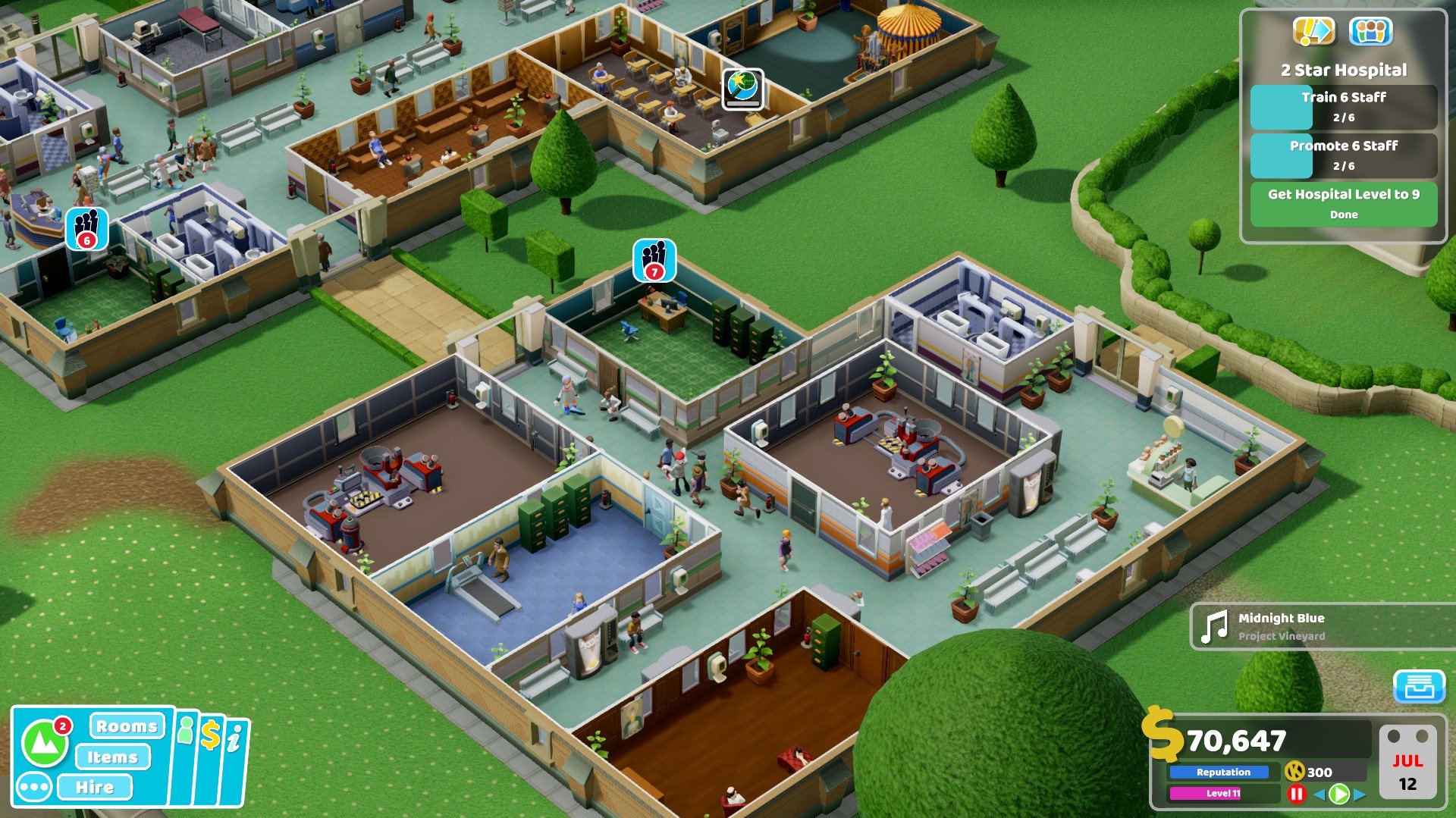

If the map has you playing a hospital in a shape of a cross, then you can only design the rooms within the cross-shaped hospital.Īs a result, I do find this to be quite disappointing. The outer wall is already pre-set, so you cannot alter the size of the hospital. While there is the freedom of designing how you want your hospital to look inside, the game does not let you change the exterior of the establishment. Beyond the laying down of walls and the placing objects, there is not much to it. While this is appealing to new players, veteran management sim players eager for a challenge ought to beware.Īs you might already guess, the building aspect of the game is not overly complicated. You might be losing money here and there at the start, but making a profit would naturally come after as long as you are following the game’s objectives. While there is no difficulty setting, the game is quite easy, overall. There is quite a large pool of music to choose from which is great. After a few numbers, there will be an announcer who says a few lines followed by more music. Looks aside, the game sounds relaxing with its choice of music. However, some gamers may naturally dislike a cartoony approach to a simulation game, so do consider how comfortable you are with characters who look like they come from Wallace and Gromit. Personally, I enjoy the game’s look as it helps to tone down the serious world of saving lives. You can also set up research facilities, which improve your machinery and reward both money and Kudosh, another element absolutely worth exploring.Follow us on Twitter Follow and Tweet us Tweet to makes Two Point Hospital stand out from its closest competitor, Project Hospital, is its cartoony art style. Whether it’s heaters or aircon to adjust temperature, machines to feed and quench thirst or fun distractions such as playable arcade games, it’s absolutely worth unlocking as much as possible. Kudosh can be earned frequently, be it through gameplay challenges or completing lengthier goals, and this allows you to buy new items to use in all your hospitals. Earning the coveted three stars on each hospital requires dedication, but there’s plenty of other avenues to explore. The litany of levels and challenges should keep players invested for dozens of hours. But when you manage to click these elements into place, there’s something hugely satisfying about running a hospital. Sessions can range from an hour to half a dozen, and some may find this dedication and time required to be too much. Whether it’s earning a 90% cure rate, curing 100 patients or keeping staff morale high, they prove time consuming and tricky to juggle with general management needed in order to avoid bankruptcy. While earlier stages aren’t too difficult and can easily be three-starred, latter stages are quite gruelling at points.

These often revolve around curing a specific illness, training staff, increasing your hospital’s value and earning a specific cure rate percentage.

Each level has as many as three Stars for the player to earn, with challenge completion rewarding them. This doesn’t even factor in the challenges you face. You’ll also need to hire and train staff, with doctors and nurses along with assistants and janitors, the latter of which help run and tidy the place respectively. But hike up the prices too much, and you’ll scare custom away, requiring dedicated micromanagement to keep it in balance.

But this can be a difficult thing to juggle, as you’ll need to make money from diagnoses, treatments and consumables to keep the hospital running. Reputation dictates business levels, with lower prices and good service encouraging more people to use your facilities. As you start with a pre-set amount of money and little interactivity from pedestrians, most hospitals require you to set up a reception, GP Office and Pharmacy in order to stir the snowball effect. Tasked with running the hospitals of Two Point County, you’ll be usually given a blank canvas to set up your own health service, bar specific challenges which usually sees the player resurrecting an already established, albeit struggling, hospital. It comes with a steep learning curve, and some may be turned off by its tougher challenges towards the end, but it proves a worthwhile time sink and a decent console port too. It’s taken a little while, but console owners would finally get to manage their own hospital in 2020. It also represented a decent step forward, with the kind of improvements which elevate the game beyond the level of a mere copycat. Billed as a spiritual successor of-sorts to Theme Hospital, with former Bullfrog team members involved in its development, T wo Point Hospital proved a delightful love-letter to late nineties simulations.


 0 kommentar(er)
0 kommentar(er)
